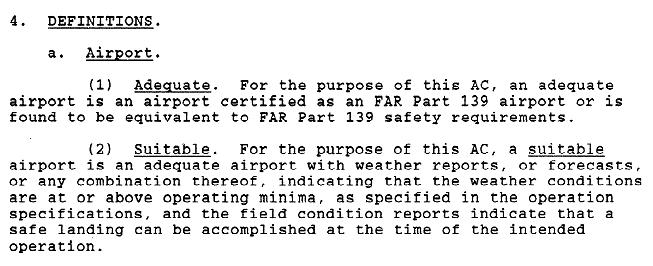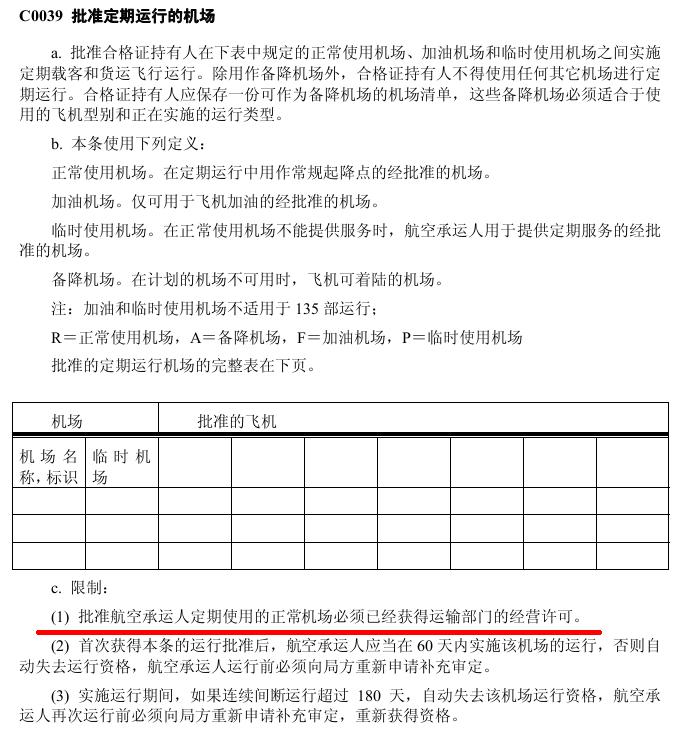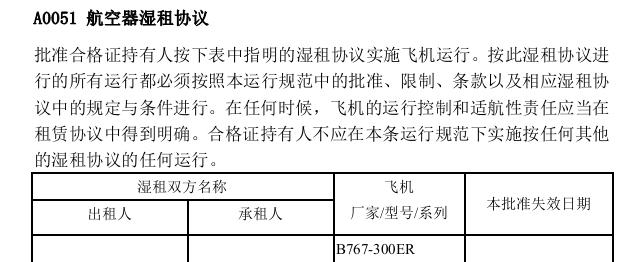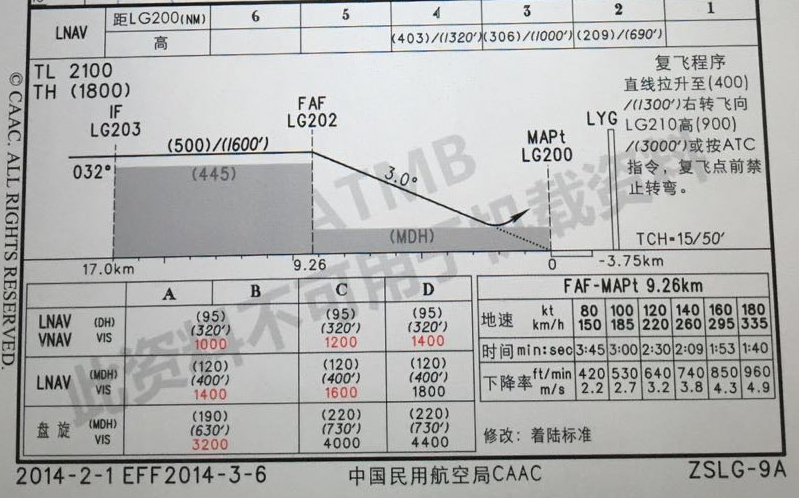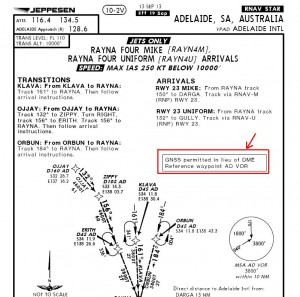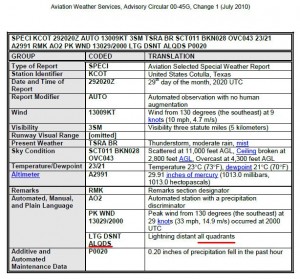分类目录归档:Advisory Circulars
顺风按150%考虑,顶风按50%考虑,关于轮胎速度的讨论。
在我的记忆中“起飞顺风按150%考虑,顶风按50%考虑”的说法,似乎在我工作时就有了。我以为这个说法是25部一如既往的要求。直到前几天,参加一个波音性能研讨会时,说到737NG系列起飞超轮胎速度的问题。会上我才发现,737NG审定时,并没有这个说法。
这个保守风量的做法是在AC25-7里面提到的。根据在FAA网站的失效法规记录(再次感叹一下FAA网站做得好),最早的AC25-7是95年生效98年失效,后来陆续更新了AC25-7A、7B、7C,直到目前有效的7D。那么这一说法是在哪一版更新中提出的呢?
最早的AC25-7的TAKEOFF AND TAKEOFF SPEEDS章节用来解释25.107的这一条当中,说明:
(7) section 25.107(f) – Liftoff Speed – The liftoff speed
(VLoF) is defined as the calibrated airspee at which the airplane first becomes airborne, i.e., no contact with the runway. This allows comparison of liftoff speed with tire limit speed.
文中说到了Vlof和轮胎速度的关系,但是没有提150%和50%的事情。此条内容在之后的改版中保持不变,直到AC25-7C版增加了b款:
The maximum ground speed at liftoff, considering the entire takeoff operating envelope and taking into account 50 percent of the headwind and 150 percent of the tailwind, in accordance with § 25.105(d)(1), must not exceed the tire speed rating established under § 25.733(a) or (c).
所以,从AC25-7C版生效时,才对Vlof有顺风150%,顶风50%的说法。这已经是2012年10月16日了。
我不记得777和737NG系列是什么时候取证的,我在维基百科上查到的说法是1995年到97年之间。从性能软件的计算结果来看这两种机型计算出来的Vlof换算一下出来的地速就是最大轮胎速度。没有留余度。
而新的787和737max在计算结果上,都对风做了处理。地速更保守,就变得不那么容易超轮速了。
最后,话说回来,飞行员担心超轮速是因为QAR在作怪,轮子本身的材质可以跑到260mph。所以这不是一个技术问题,这是一个中国特色的管理问题。呵呵。
GPS的Selective Availability
最近听说有些飞机的ADSB设备不满足美国的运行要求,我很诧异。原来这个不满足要求,是由于GPS导航精度引起的。GPS系统有个叫Selective Availability的东西,是用来故意降低GPS精度的。详情可以看这个链接:GPS Policy – Selective Availability(SA)。在2000年后,美国政府停用了这个功能。更新的设备可以识别SA是否开着(SA-Aware),并提高导航精度。但是有些老航电设备,仍然以为SA功能开着(SA-On),提供着降低精度的数据。
这就是为什么有些具备ADSB设备的飞机,却达不到ADSB运行精度要求的原因。
详细的AC可以查AC90-114A。
备用前重心的几个知识
我最早是在华欧学空客机型的时候,知道备用前重心的事情。我记得当时说的是可以减少耗油。但是现在看来,我可能当时理解错了(我记得是个英国老头上课,可能我错误理解了performance的意思)。
现在在学习787的性能内容时,说到备用前重心主要是提高起飞性能。
下面说说备用前重心的几个知识:
- 由于安定面的下压力减小了,所以总体升力会变大,或者说为了达到同样的升力,速度可以减小,因此所需场长变短。
- 由于Vr小了,因此可以避免轮胎速度限制。
- 失速速度变小了,V2也变小了。
- 对于相同速度,因为阻力变小,可以提高爬升性能。但是,由于备用前重心可以减低起飞速度,而速度小对爬升不利。两者同时考虑的结果就是,备用前重心“大多数情况下”可以提升爬升性能。
- 使用备用前重心后,FMC和FCOM中的性能数据都不能用,只能用OPT或者专门制作的起飞性能表。
另外,FAA发过一个AC25-7D,文中说道:
42.11.3.1 No more than two alternate forward CG limits (three total) should be approved per operator-specific variant of a particular airplane type and model.
每个机型可以一共有3个前重心。一个正常,两个备用。一般来说,经过对历史数据的积累,第一个备用前重心的数值,不用刻意改变配载部门的工作流程。第二个备用前重心(更激进的)可以在改变配载流程后获得。
MEL中的合适机场要求
最近遇到一个中央燃油泵的MEL,在案例分析过程中,大家对MEL里的一个描述产生了争议。MEL要求在起飞后,如果另一个中央燃油泵也不工作后,剩余的燃油能够到达一个合适机场。
问题是这个合适机场要满足什么要求?有三种不同的选择:
1)只要机场满足基本的保障要求(比如长度、道面、消防等级),不考虑天气。
2)在1)的基础上,还要求在放行时天气满足落地标准。
3)在1)的基础上,还要求在放行时天气满足备降标准,空中满足落地标准。
在争执过程中,我去考古了一下“合适机场”这个概念。
《CCAR121R4》
第121.561条 发动机不工作时的着陆和报告
(a)对于所有飞机,在飞机发动机失效,或者为防止可能的损坏而停止发动机运转时,机长均应当按照飞行时间在距离最近的能安全着陆的合适机场着陆。
第121.712条 定义
下列定义适用于本章:
(a)合适机场:是指达到第121.197条规定的着陆限制要求且局方批准合格证持有人使用的机场,它可能是下列两种机场之一:。。。。(不要求天气)《AC-121-FS-2012-009R1》
1.2 定义
下列定义适用于本咨询通告:
c. 延程运行可选备降机场(Suitable ETOPS Alternate)(CCAR-121部定义的合适机场):对于特定延程运行航线,不考虑当时的临时状况,列入合格证持有人运行规范的可选的航路备降机场。这些机场必须满足CCAR-121.197条规定的着陆限制要求。它可能是下列两种机场之一:。。。。。。。(不要求天气)《CCAR121R5》
第121.561条 没变
第121.712条 消失了。。。。。。。。(连定义都没了,怎么办)
可见,这个合适机场的概念和ETOPS运行纠缠不清,以至于我找一下网上的定义,搜索出来的都是ETOPS的东西。其实我的运行并不牵涉到ETOPS,合适机场的概念仍然存在。
再看看FAA的情况:
FAR121
121.565 Engine inoperative: Landing; reporting.
(a) Except as provided in paragraph (b) of this section, whenever an airplane engine fails or whenever an engine is shutdown to prevent possible damage, the pilot in command must land the airplane at the nearest suitable airport, in point of time, at which a safe landing can be made.
121.7 Definitions.
The following definitions apply to those sections of part 121 that apply to ETOPS:
Adequate Airport means an airport that an airplane operator may list with approval from the FAA because that airport meets the landing limitations of §121.197 and is either—AC 120-42A(已取消)
AC 120-42B
定义不存在。
根据以上对比,121R4中定义的合适机场,应该是Adequate Airport。FAA对于合适机场的定义在AC120-42A当中是有的,更新AC120-42B已经消失了,当前的FAR121也没有定义。
借用网上的一段话:“Officially AC 120-42A was cancelled and replaced by 120-42B, they did not transfer the definition of “suitable” airport. So that is why I asked.”
公司手册中也没有对合适机场有定义。
这个问题的争议重点在于,合适机场的定义是否需要考虑天气?是否应该考虑到备降标准?
后来我偶然看到,在机组训练手册FCTM里有关于合适机场的表述。因为在QRH中常常出现“在最近的合适机场落地”,机组训练手册对此专门做了说明。内容如下:
Landing at the Nearest Suitable Airport
“Plan to land at the nearest suitable airport” is a phrase used in the QRH. This section explains the basis for that statement and how it is applied.In a non-normal situation, the pilot-in-command, having the authority and responsibility for operation and safety of the flight, must make the decision to continue the flight as planned or divert. In an emergency situation, this authority may include necessary deviations from any regulation to meet the emergency. In all cases, the pilot-in-command is expected to take a safe course of action.
The QRH assists flight crews in the decision making process by indicating those situations where “landing at the nearest suitable airport” is required. These situations are described in the Checklist Instructions or the individual NNC. The regulations regarding an engine failure are specific. Most regulatory agencies specify that the pilot-in-command of a twin engine airplane that has an engine failure or engine shutdown should land at the nearest suitable airport at which a safe landing can be made.
A suitable airport is defined by the operating authority for the operator based on guidance material but, in general, must have adequate facilities and meet certain minimum weather and field conditions. If required to divert to the nearest suitable airport (twin engine airplanes with an engine failure), the guidance material also typically specifies that the pilot should select the nearest suitable airport “in point of time” or “in terms of time.” In selecting the nearest suitable airport, the pilot-in-command should consider the suitability of nearby airports in terms of facilities and weather and their proximity to the airplane position. The pilot-in-command may determine, based on the nature of the situation and an examination of the relevant factors, that the safest course of action is to divert to a more distant airport than the nearest air port. For example, there is not necessarily a requirement to spiral down to the airport nearest the airplane’s present position if, in the judgment of the pilot-in-command, it would require equal or less time to continue to another nearby airport.
For persistent smoke or a fire which cannot positively be confirmed to be completely extinguished, the safest course of action typically requires the earliest possible descent, landing and evacuation. This may dictate landing at the nearest airport appropriate for the airplane type, rather than at the nearest suitable airport normally used for the route segment where the incident occurs.
内容有点长。我把它全部贴出来,是因为少了上下文说不清。
文中说明了合适机场考虑的几个要素:必要的设施、天气标准、跑道情况。
是否需要考虑天气标准的问题,已经有了答案。至少波音认为(我也觉得)需要考虑落地标准。所以本文开头的选择1)肯定不对。考虑天气是必要的。
那么,是否需要考虑在放行时,提高到备降标准呢?注意是放行时。
我认为(仅仅是我认为),有这个必要。我来说说我的理由。
想想ETOPS和飘降吧,和正常航班相比较,机长的决策范围变小了很多。比如上海飞北京,是一个正常航班,机长可以毫无忌讳的地选择他认为“就近”的合适机场,这种选择没有被飞机系统或物理条件“限制”。
但是ETOPS和飘降航班,这种选择的范围,被飞机系统或物理条件,限制在某几个机场中间(比如单发后的改航时限,大海和高山)。因此,在放行时,就需要提高为备降标准(ETOPS备降场和航路备降场)。
同样的,依据MEL放行时考虑另一个燃油泵也失效,机场的选择范围一样被限制了。这就是为什么我认为:在放行阶段,如果MEL出现了对合适机场的要求,那么签派员应该把选择的机场,写入放行单,并按备降标准放行,在空中满足落地标准。
==============================================================
题外话1:关于合适机场的定义,局方应该明确一下吧。
题外话2:FCTM中说到了不需要就近合适机场降落的情况,比如着火、烟雾、异味。
题外话3:考虑去最近的合适机场时,考虑的不是距离,而是时间。比如在飞机边上有个合适机场,飞机不可能一头栽向那个机场。只要考虑飞行时间最短的那个机场称为“最近”。
可以用EFB上的气象图来绕飞吗?
曾经我见过有飞行员用EFB(ipad)连上机载wifi,然后用一些提供气象产品的app,来了解雷雨或台风的位置。或者在飞行中打开flightradar看看周围的飞机。这个办法真是方便极了,连我都觉得这个办法不错。我不确定是否有飞行员真的用app来绕雷雨,但是心里有点担心。担心这些数据的有效性和准确性。
今天翻看FAA的EFB咨询通告AC120-76D的时候,读到里面有关于EFB使用数据链的问题:
11.15.1 Meteorological Information (MET)/Aeronautical Information Service (AIS) Products.
Data link-supported EFB applications may display approved sources of weather for strat egic/flight planning purposes. Weather and aeronautical information, such as data -linked MET and AIS products, are for advisory use only. These products are intended to enhance situational awareness, but lack the service delivery reliability and updating necessary for tactical maneuvering/use.Do not use data-linked MET and AIS products for making tactical in-flight decisions regarding flight safety when avoiding adverse weather, airspace, or obstacle hazards (e.g., negotiating a path through a weather hazard area).
11.15.2 Graphical Weather Information. Data link graphical weather from sources such as XM radio and next eneration weather radar (NEXRAD) may be from approved sources of advisory weather information and can only be used for strat egic/flight planning purposes. Do not use data link graphical weather information for tactical decisions because data quality is uncontrolled for aviation use. Do not use data link graphical weather data as a substitute for airborne weather radar or thunderstorm detection equipment.
所以,EFB只能“显示”经批准的数据。在线更新的数据只能当作咨询信息。不能使用EFB上的app来避让或导航。
EFB上的这些app用来给飞行员了解周边环境是可以的。我估计开了这个口子,飞行员肯定会更加依赖第三方app。毕竟这些第三方app的用户界面做的很好,这是大势所趋。
Truth in Leasing
在国内运行规范的C0039模板中有这样一句话:
”C0039:批准航空承运人定期使用的正常机场必须已经获得运输部门的经营许可“
也就是说,如果公司没有从局方获得这个机场的经营权时,C0039中的这个机场,不能标成“R”。这是很容易想通的。
=========================湿租协议===========================
但是当公司与另一个公司有湿租协议时呢?事情就有点复杂了
假设S公司和D公司签订湿租协议。S公司提供飞机和机组,负责运行控制。D公司提供航班号和经营许可。
这会造成S公司没有这个机场的经营权。S公司的签派员在做运行控制时,S公司的运行规范中没有这个机场的标志。怎么办呢?
解决办法是在A0051中标明湿租航线起降机场。
并且,A0051中明确了,S公司开展湿租运行时应该遵守S公司的运行规范:
A0051按此湿租协议进行的所有运行都必须按照本运行规范中的批准、限制、条款以及相应湿租协议中的规定与条件进行。
所以,S公司应该依据自己的运行规范,来运行D公司的航线。
=====================C0039的其他问题=======================
S公司的运行规范C0039当中还存在一个问题。备降场要不要标识?C0039只限制正常机场有经营权,但是对备降场没有限制。
我认为,当S公司完成D公司的航线性能分析后,应该把报告中备降场加入S公司的C0039。这样的做法避免了后续很多问题。
=====================CAAC的咨询通告=======================
CAAC对于租赁有一个旧的20050315AC-121-62航空器租赁。(真没想到我有朝一日会用到这个AC)。文中没有对运行控制说什么,只说道:
8.5 湿租航空器的适航性责任和符合其所在国相应运行法规要求的责任由出租人承担,但承租人有责任确认其符合CCAR-121部的有关运行要求。
感觉这个AC更多的偏向飞机引进和机务维修方面。对我没什么参考意义。
=====================FAA的咨询通告=========================
在解决这个湿租问题时,我找到了FAA为湿租问题,发布的咨询通告AC91-73B,叫做“Truth in Leasing”(英语不好,不知道Truth in Leasing应该翻译成什么)。戳。
发布这个咨询通告的目的就是为了明确“运行控制的责任方”。可见湿租过程中运行控制责任的明确是多么地重要。
the Federal Aviation Administration (FAA) prepared this AC to ensure any person who is seeking to lease an aircraft understands the meaning of operational control and does not enter into an agreement where operational control is not clearly maintained by the appropriate party.
===================生气可以减肥============================
我发现这个问题是因为一个员工报告的案例。某次湿租航线放行时,想选择一个不常用的备降场,却意外发现运规C0039中没有任何标志。
我将此事提出给负责部门后,却得到了意外的结果。生气得午饭都吃不下。
这个世界上除了“正确的事”、“错误的事”外,还有“灰色的事”。这点我虽然反感,但是承认。不过,你做灰色的事情,不能给第三方挖坑啊。再说了,灰色的事情不能天天做,年年做啊。
唉,反正我是不得其中要领,因此我也没想过要做“领导”,也搭不出官架子,更说不出“让你们领导给我打电话”这种屁话的。
PBN和QFE
我已经不止一次地被问到运行PBN的时候是否可以用QFE?我想当然地回答不能,因为有一次参加唐山机场PBN运行试飞的时候,机组要求塔台提供QNH而非QFE的。所以这件事一直在我脑海里。直到前段时间(大约1个月前)有个微信上的朋友给我看了一张连云港的PBN图用的是QFE。。。。
于是我想去找找程序设计上是怎么说的。
ICAO 8168关于 Baro-VNAV是可以用QFE的:
但是我看国内的咨询通告,AC-91-FS-2010-01R1在终端区和进近中实施RNP的运行批准指南 ,却没写DH。国内AC的参考FAA AC90-105也没有QFE什么事。
然后我又得知机型有限制:
在波音的手册里明确写了不能在LNAV/VNAV时使用QFE。有非官方的说法是EGPWS在QFE时会失效(传说)。
FCOM:
传说空客的飞机可以用QFE,但是我手上的手册坏了。过两天再去找找。
更新:空客可以,但是需要改装,见文章评论。
对于在QFE时能不能使用PBN程序?或者能不能使用Baro-VNAV?我也不敢很确定。如果有朋友知道明确答案,请告诉我。
Fail Operational and Fail Passive
我记得我以前见过这两个概念,怎么找不到了,现在补上。
《AC 120-28D CRITERIA FOR APPROVAL OF CATEGORY III WEATHER MINIMA FOR TAKEOFF, LANDING, AND ROLLOUT》
A Fail Operational System is a system which after failure of any single component, is capable of completing an approach, flare and touchdown, or approach, flare, touchdown and rollout by using the remaining operating elements of the Fail Operational system. The failure effects of single components of the system, airplane or equipment external to the airplane which could have an effect on touchdown or rollout performance must be considered when evaluating Fail Operational systems. Fail Operational systems may be used to touchdown for Category IIIa (e.g., without a rollout system) or Category IIIb through rollout to a full stop. Use of a fail-operational system to touchdown in conjunction with a rollout system that is not fail-operational is acceptable as long as a suitable minimum RVR is specified in the operations specifications, for rollout.
Fail Operational代表系统中单个组件故障后,剩余的部件任然可以完成近进。
A Fail Passive System is a system which in the event of a failure, causes no significant deviation of aircraft flight path or attitude. The capability to continue the operation may be lost and an alternate course of action (e.g., a missed approach) may be required. A fail-passive system is the minimum capability system acceptable for Category III operation with a Decision Height not less than 50 ft. HAT.
Fail Passive代表系统失效不会造成严重偏离,但是继续近进的能力无法维持了。Fail Passive是50ft三类盲降的最低要求。
FAA AC 00-6A Aviation Weather For Pilots and Flight Operations Personnel 民航气象中文版 2014/7/14更新
2014年7月14日更新:
solakzlq@126.com:第34页:在寒潮和向北裹挟着温暖的气流之间,大型的中纬度风暴发展。结果产生了迁移来的中纬度风暴带及多变的天气。第35页:夏季时,温暖的陆地形成低压。而相应地,较冷的海洋形成高压。
FAA AC 00-6A Aviation Weather For Pilots and Flight Operations Personnel 民航气象中文版
网盘下载:戳
此书所有版权归英文原作者/组织所有。
RNAV进离场是否需要RAIM预测?
事情是酱紫的,YPAD发了一份通告,说DME坏了。航图上是这样的:
我看到“in lieu of”这句时就晕了。南半球的朋友思路果然不一样。你们知不知道中国人考个四级六级最怕什么阿?不怕单词难,最怕单词都认识,连起来却不认识的短语,这种短语的翻译还特别多。
我查了字典,“in lieu of”应该是代替的意思。我觉得这图的意思大概是居于DME和GPS的RNAV程序。现在DME坏了,应该只能用GPS了。
问题是我们在YPAD没有做RAIM预测的软件。
有一种说法是,只要是RNAV程序(非RNP)且有雷达引导,就可以不做RAIM预测。等于是管制来监控飞机的精度。但是我觉得不妥。我查了FAA的AC-90-100A和CAAC的AC-91-FS-2008-09,文中都说到了:
If TSO-C129 equipment is used to solely satisfy the RNAV requirement, GPS RAIM availability must be confirmed for the intended route of flight (route and time) using current GPS satellite information.
9.1.5 如果单独使用TSO-C129()设备满足RNAV要求,则必须使用当前的GPS卫星信息来确定拟定航路和终端区飞行的GPS RAIM可用性。
文中的TSO-C129代表Airborne Supplemental Navigation Equipment using the Global Positioning System (GPS)
所以,不管是RNAV或RNP,只要是GPS单独作为导航源运行的时候,就需要RAIM预测。
FAA AC 00-6A Aviation Weather For Pilots and Flight Operations Personnel 民航气象中文版
翻译共用时1年8个月,近十万字。对民航气象有兴趣的朋友们可以下载。
FAA AC 00-6A Aviation Weather For Pilots and Flight Operations Personnel 民航气象中文版
网盘下载:戳
此书所有版权归英文原作者/组织所有。
ALQDS
AC 00-6A AVIATION WEATHER 翻译 第16章草稿
第十六章的内容是滑翔。内容老难的,加之在家带孩子占据了一部分时间,所以翻译的比较慢。现在所有的章节都翻译完了,下一步就是把插图翻译掉,并且检查错误。AC 00-6A Chap16
AC 00-6A AVIATION WEATHER 翻译 第14-15章草稿
14章讲的是极地飞行的内容,和我们日常飞行关系不大,就算是有极地运行也是在高高度上。15章讲的是热带天气,其中对热带气旋的介绍值得一看。AC 00-6A Chap14-15
AC 00-6A AVIATION WEATHER 翻译 第13章草稿
13章讲的是高空天气,其中急流和颠簸比较有用,对颠簸的描述最有用。文中说到颠簸区的预测范围很大,准确度不高,实际发生严重颠簸的概率很小。这改变了我对预告图上对颠簸区域的认识。AC 00-6A Chap13
起飞后ETOPS航路备降场的天气要求
曾经121升级成R4的时候牢牢记住了:“ETOPS航路备降场的天气标准和普通计划备降场的相同”。一直到现在被人问到两者有什么区别的时候,我回答:“一样呀”。
哎,业务不精啊~~~。两者还是有那么一点点区别的。
第 121.724 条 初始签派或飞行放行,二次签派或重新签派或飞行放行
(a)只有在下列条件下,才能允许飞机继续飞行并越过延程运行进入点:
(1)除本条(b)规定外,对于本规则第 121.722 条要求的每一个延程运行备降机场,在可能使用这些备降机场之时(从最早到最晚的可能着陆时间),其预报天气条件均等于或高于合格证持有人运行规范中规定的机场最低天气标准;
(b)如果某一机场无法达到本条第(a)(1)项的要求,可对签派或飞行放行单进行更改,增加一个飞机能以批准的最大改航时间飞抵的,天气条件等于或者高于最低运行标准的延程运行备降机场。
FAA原文:
(c) No person may allow a flight to continue beyond the ETOPS Entry Point unless—
(1) Except as provided in paragraph (d) of this section, the weather conditions at each ETOPS Alternate Airport required by §121.624 are forecast to be at or above the operating minima for that airport in the certificate holder’s operations specifications when it might be used (from the earliest to the latest possible landing time); and
(2) All ETOPS Alternate Airports within the authorized ETOPS maximum diversion time are reviewed and the flight crew advised of any changes in conditions that have occurred since dispatch.
根据121.724条,要求在飞跃进入点前(不是起飞前,起飞前用实况预报的结合)整个时间窗口内预报的天气都不能低于落地标准。普通的备降场没有这个要求。如果不能满足a项要求,可以增加一个最大改航时间内的备降机场。增加一个航路备降场的事我还没遇到过,公司手册中对于起飞后至进入点前预报中出现的TEMPO、PROB和PROB TEMPO的参考依据也没说的很清楚,怎么样增加一个航路备降场的方法说的也不清楚。反正以后上班时要格外注意航路上机场的TEMPO情况了。
AC 00-6A AVIATION WEATHER 翻译 第12章草稿
第十二章讲的是造成低能见度的一些因素,比如雾烟吹沙等等。由于前段时间欧洲杯和最近家中有事,翻译进度明显减慢了。目前把这本AC的第一部分翻译完了,我在纠结是否要继续翻译第二部分,第二部分似乎有些太理论化了。签派员不需要这知道这么详细。AC 00-6A Chap 12
AC 00-6A AVIATION WEATHER 翻译 第10-11章草稿
第10章讲的是积冰,其实我们不需要知道积冰产生的原因。只需要知道积冰的种类和怎么应付。第11章讲的是雷暴,最后的总结部分说得很有用处。AC 00-6A Chapter 10-11
AC 00-6A AVIATION WEATHER 翻译 第7-9章草稿
7至9章说的是云、锋面和颠簸。云的识别比较有趣,但是目前我对如何分辨云的类型还是没有把握。原文中的图片是黑白的,所以我只能从网上下载图片加入其中,可能会有版权问题。不过本文只是学习之用,我并没有因此谋利。AC 00-6A Chap 7-9

